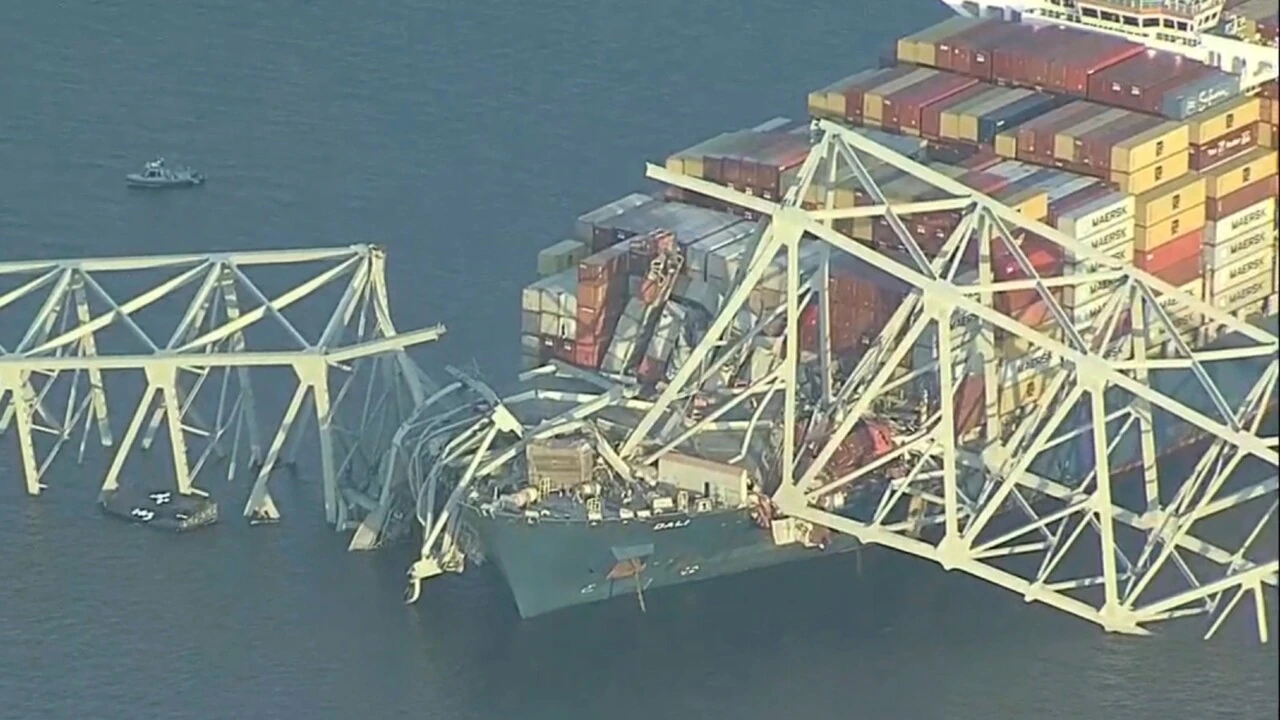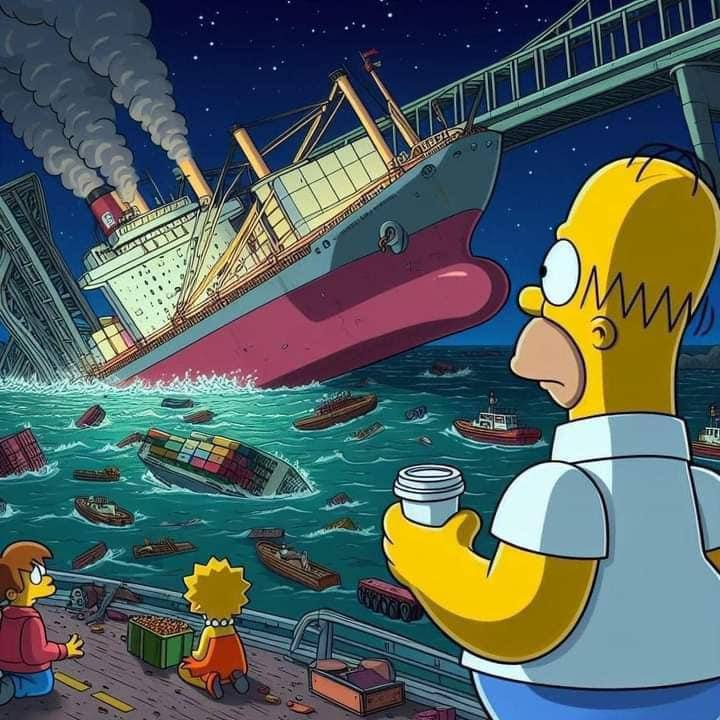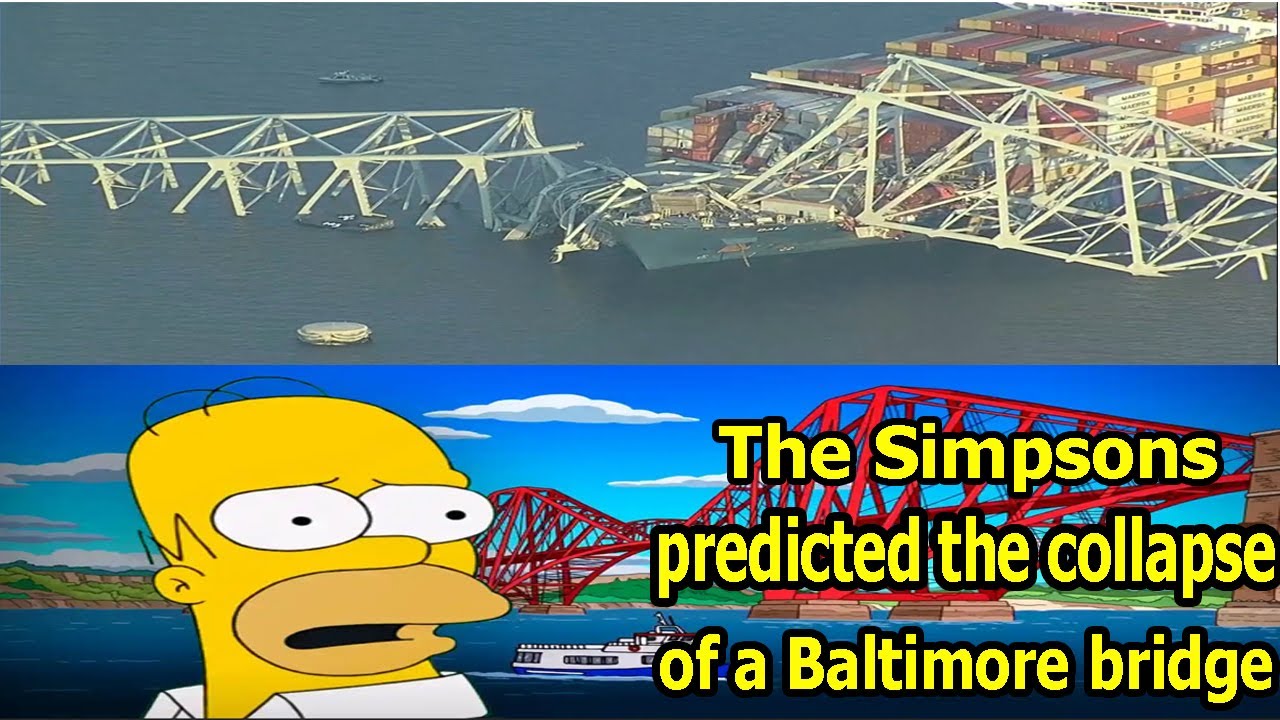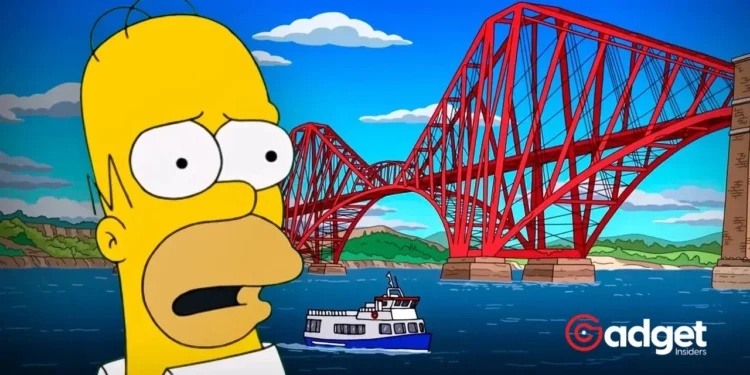In an era where reality and fiction blur lines with the advent of artificial intelligence and viral content, a peculiar story related to the Simpsons emerges from Baltimore, Maryland, that has captivated the imaginations of many.
A catastrophic event, the partial collapse of the Francis Scott Key Bridge, following a harrowing collision with the cargo vessel named Dali, has sparked not only concern and empathy but a wildfire of conspiracy theories, notably linking the incident to America’s beloved TV series, The Simpsons.
The Claim: Did The Simpsons Foresee the Baltimore Tragedy?
Rumors swirled across social media platforms, spearheaded by a viral photo depicting The Simpsons’ characters aboard a boat, witnessing the unsettling sight of a ship and a bridge collapsing. Claims rapidly circulated suggesting that the animated series, renowned for its uncanny predictions of future events, had somehow foreseen the Francis Scott Key Bridge’s downfall.

Separating Fact from Fiction: The AI Misdirection
Upon closer inspection, the foundations of these claims crumble under the weight of factual evidence.
The photo in question heralded as a prophetic vision from The Simpsons, has been identified as an AI-generated fabrication. Platforms like X (formerly Twitter) became battlegrounds for conspiracy theories, with AI-generated videos and images feeding the frenzy.
Despite the compelling narrative, keen observers and fact-checkers quickly debunked the authenticity of these visuals.

The Quint Digs Deeper: A Fact-Checking Mission
A thorough investigation by The Quint reveals that the viral image did not exist on the internet before March 28, 2024, starkly contrasting with the timeline of the bridge’s actual collapse on March 26.
This revelation was further cemented by a detailed examination of The Simpsons Season 35, Episode 8, rumored to contain the prophetic scene. The episode, instead, took viewers on a journey to Scotland, with no mention or visual of a sinking ship or collapsing bridge.
Did the Simpsons predict Baltimore bridge collapse? Find out.
READ: https://t.co/OzBcakOWy4
— Jack Straw (@JackStr42679640) March 30, 2024
AI’s Role in Shaping Narratives: A Cautionary Tale
This incident sheds light on the potent influence of artificial intelligence in crafting narratives that can sway public perception and fuel unwarranted speculations. The mismatch in character design, particularly Homer Simpson’s iconic hair pattern, was a critical clue in debunking the image’s authenticity.
This error, overlooked by the creators of the AI-generated image, served as a clear indicator of its falsified nature.

The Importance of Vigilance in the Digital Age
As we navigate through the digital age, the incident serves as a stark reminder of the importance of critical thinking and the need for rigorous fact-checking. The allure of sensational stories, especially those that intertwine popular culture with real-world events, can often lead to the dissemination of misinformation.
The Baltimore bridge collapse and the subsequent The Simpsons conspiracy theory underscore the dual-edged sword that is social media and artificial intelligence, highlighting the need for vigilance and a discerning eye amidst the sea of information that floods our digital landscape.










